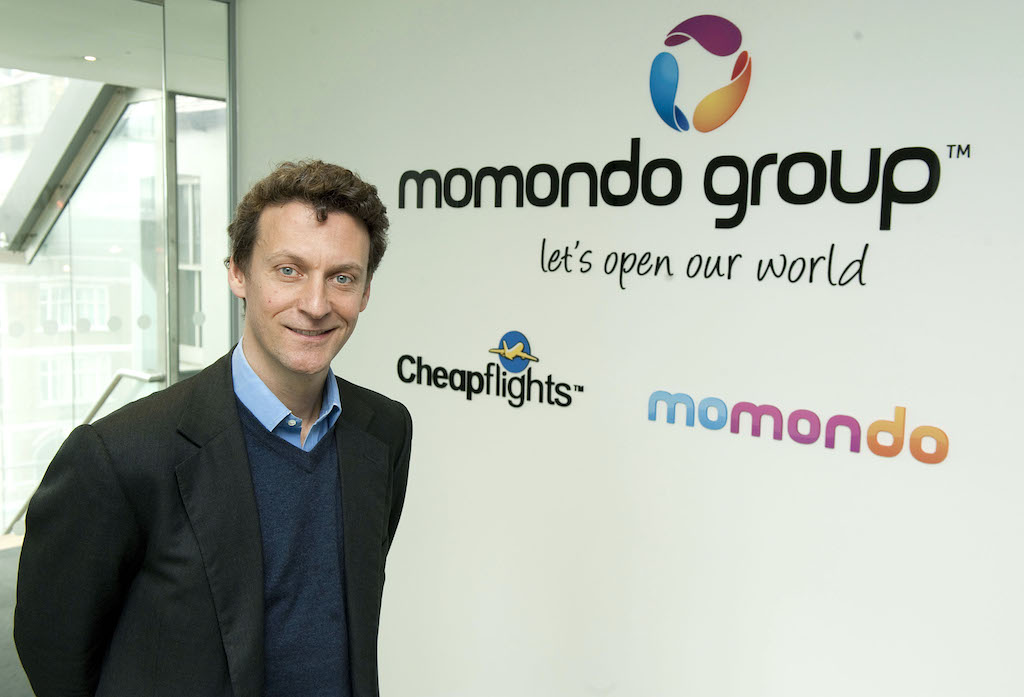A boutique consultancy dedicated to delivering relevant insights that guide clients through complicated decisions and uncover new ways of thinking.

Shari Allison
Principal
Shari has spent the past 20 years helping clients refine the way they look at their marketplace, their customers & their business. Co-founder of Ignite in 2011, Shari focuses on challenging convention, redefining context & delivering clarity to client partners. Although she holds advanced degrees in consumer behaviour, Shari’s expertise extends well beyond research & insights to thought-leadership & true strategic-partnership.

Stephen Tile
Principal
For the past 30 years Steve has been helping some of the biggest brands refine their target, define their messages and build their businesses. He is a consummate strategist who uses an array of research tools to deliver crisp & meaningful insights that inspire and transform.
Ignite is brought to the table when senior level, objective, thought-partners are needed to help provide clarity, focus decision-making & optimize opportunity.
Our business model allows for intimate, hands-on engagements that are flexible & provide meaningful business outcomes.
While Ignite can of course execute basic research, our sweet spot is really those issues that are strategically significant to the organization.
We focus on strategic, high-touch engagements related to…
- Market dynamics
- Brand strategy
- Brand targeting & positioning
- Brand identity
- Innovation
- Concept development
- Concept evaluation/execution
- Communication strategy
- Communication development/evaluation
Specializing in retail, travel, packaged goods, alcohol, technology, financial services & luxury goods segments.
- Ignite employs a creative range of methods to uncover insights…from traditional focus groups & online surveys to inventive interactive, observational & ethnographic approaches.
- Emphasis is on driving insights deep into organizations, either up or down, where they can be actioned — use facilitation & workshopping methods to ensure organizational enculturation.
How To Create A Life Cycle Communication Plan for Marketing and Sales Leads
Think of all the contacts your business has right now.They probably aren’t all sales ready leads. Most businesses have various different types of contacts that they reach out to for various reasons at various times. Who Are These Contacts Subscriber– Someone who has opted in for something like your blog or newsletter Lead– Someone with more interest than a subscriber who downloaded a piece of content from you and has given more information than just their email Marketing Qualified Lead- More interested and active than just a lead, they have probably downloaded 2 or more pieces of content, opened and clicked through a few emails, etc. Sales Qualified Lead– Someone who is educated and ready enough to talk to your sales team Opportunity– Someone your sales team has spoken to and identified as ready to buy Customer– Someone who pays for your services or products Evangelist– Someone who is a partner or promoter of your business Learn more about these contacts and how to develop a successful life cycle communication plan...Predictions For The Future Of Insight-Driven Innovation
The future of insight-driven innovation has a theme – customized and individualized. As our systems, devices, and networks collect more data on an individual level and we learn to analyze it for personalization, we could become a society that embraces individuality and understands that no two situations are the same. Here are some ways that the future of insight-driven innovation can help us learn more, live longer, and improve the world around us. 1. Social media is becoming the database containing our life’s information With all the social media data that has been openly shared by the billions of users and stored in data warehouses, social networks really do have super powers – not just in the platform or the vast user-base, but in their ability to mine the collected data. Social networks have information about daily activities, life milestones, and the words and emotions spouted off in excitement and frustration. From this information, data scientists and others are mining aggressively to find out more about the human race – everything from how we see ourselves and how we see others, to trends in happiness and depression. A lot of these studies are focused on teens who are growing up with this technology, and more interestingly, the studies are showing how teens’ digital lives affect their offline lives. As we continue to collect and analyze this data, we can proactively modify our lifestyles to prolong a healthier, happier life. Read more about the other ways that insight-driven innovation will change in the future here....Five Tips for Creating a Content Strategy That Stands Out in a Crowd
One of the biggest challenges for SMEs in thinking about their content strategy is the sheer volume of available content channels. Between personal blogs, traditional media outlets and social media channels, it’s becoming increasingly hard for brands to create a signal that breaks through the marketing noise. Here are five tips for SMEs in developing a content strategy that stands out from the crowd: 1. Have a compelling roadmap 55% of marketers surveyed by HubSpot didn’t have a content strategy even though they were currently creating content. Would you set out for a new destination without a map? Didn’t think so. A content strategy that aligns with your business metrics and your core goals is imperative. Identify what you will do, how you plan to do it, and what needs to be true to define success: creating content just for the sake of doing so doesn’t help your business or your customers. Read about the other five tips for creating an effective content strategy...8 Questions To Ask When Setting Up Your Brand’s Social Media Strategy
So you run a brand and you’ve decided to dive into the world of social media. Before you hop in that rocket ship straight for Facebook and Twitterland, and start sharing things all willy nilly, consider the effects a calculated social media marketing strategy will have on your efforts. Like any business decision, it’s important to have a clear flight path that outlines the who, what, where, when, why and hows. Social media is no different! Ask yourself these questions before planning out your social media marketing strategy. Who is my audience? In order to even begin to put a strategy together, it’s essentially important to have a target audience in mind. Males, schoolteachers, or children are not specific enough of a focus. Generally, there are 3 major things you should identify when defining an audience: demographics, interests and needs. If you can point out the exact demographics of your target audience, understand their interests, motivations, but especially their needs, you will be able to reach their beloved news feeds. Find out the other 7 questions to ask when setting up your brand’s social media strategy...The Secret to Going Viral: 5 Social Media Tips
For many social media users, the ultimate goal is to “go viral.” Whether it’s the owner of a YouTube channel or a small business brand manager trying to establish a social presence, people just want their post, tweet, photo or video to be noticed and shared by users with a large number of followers, thereby exponentially increasing their audience reach. Because of the public nature of social media, any user with the right marketing strategy has the potential to go viral. “It’s a free-for-all,” said Shana Starr, managing partner of public relations firm LFPR. “Brands big and small are constantly thinking of creative ways to be part of the conversation, whether or not it relates to their product or company.” Read more about these 5 social media tips that will allow you to go viral...Cheapflights and Momondo Attempt a Dual-Brand Strategy
Imagine if Kayak acquired Skyscanner and they decided to divide up the world, pursuing different markets for their travel-metasearch offerings. Or if Trivago decided to launch a second metasearch brand, and they decided to pick off different countries, targeting diverse demographics with different offerings. Multi-brand strategies (see Priceline, Booking.com and Agoda or Expedia, Hotels.com and Hotwire) work well enough in other categories, so why not metasearch? It hasn’t really been tried before, but the Momondo Group, created in 2012 after 18-year-oldCheapflights Media acquired Denmark-based Momondo, is giving it a whirl. UK-based Cheapflights, which has until now specialized solely in publishing negotiated flight deals, just launched what it hopes will be a harbinger of things to come — a flight-metasearch site in New Zealand. That’s a huge departure for Cheapflights, which has been a Top 10 online travel agent site in the UK, according to Hitwise. Cheapflights has flight-deal sites in the UK and Ireland, the U.S., Canada, Australia, Germany, Spain, France, Italy, and South Africa, but wants to cash in on the hot, and presumably more lucrative, metasearch trend. Read more about this dual-brand strategy and how it will work here....Brands Create Instagram Strategy
Patagonia, Hollister and Warby Parker are among the brands making effective use of Instagram to engage consumers, according to a leading executive from the social media platform. Jim Squires, Instagram’s director/market operations, discussed how marketers are leveraging its service – both organically and with paid-for ads – during the Advertising Age Digital Conference 2014. Outdoor apparel and equipment specialist Patagonia was one of several companies he drew attention to, praising it for focusing on a way of life, rather than simply uploading images of products. “They highlight, through Instagram, the outdoor lifestyle that their products enable. I don’t think I’ve ever seen an actual product shot inside of the photography that they do,” said Squires. Read more about how these brands created an effective Instagram strategy...Avoiding Careless Social Media Brand Strategy
Yet another nail salon opened up in my neighborhood. I think that makes 20 in a three block radius. Like many men, a “nail salon” for me is a hot shower and a nail clipper that my Dad gave me 20 years ago. In my book, if the nails are trimmed neat and clean, then I’ve done my job. I don’t begrudge anyone — man or woman — who patronizes these establishments. But for me, color on the tips of my fingers and toes is way down on my priority list. Just ahead of starting a wasp circus. I walk by the new nail salon sometimes four times a day. And if I see the proprietor in the window I’ll smile and nod. Yesterday I introduced myself and welcomed her to the neighborhood so it came as a surprise when she looked at me contritely and did not introduce herself. Instead of shaking my hand, she grabbed my hand without saying a word not to shake it but to examine it. “You need a manicure,” she said. “Come inside now my girls need the work.” Most people would agree that this tact showed bad manners and bad business, yet this is exactly the way some brands approach social media. Read more about this topic of brand strategy and how you can avoid careless social media brand strategy from Frank Bocchino...5 Strategies for Communicating When You Don’t Even Like to Talk
The stereotypical entrepreneur talks to everyone easily, but introverts need not be discouraged. Reticence does not doom you to failure. Social science finds at least a third, and maybe half, the population is introverted. Successful entrepreneurs who are introverts make their personalities work for them. With less interest in the spotlight than accomplishing goals, introverts are inclined to let talented employees run with their ideas. Here are five strategies for making introversion an asset. 1. Learn to work with your personality. Even if it makes your palms sweat, as an entrepreneur you need to communicate with people. That does not mean you need to do it in situations that are terminally uncomfortable. If speaking in front of a large crowd is too much, one-on-one meetings are often just enough. When you must talk to a group, prepare a script. Identify your strengths and weaknesses and adjust accordingly. Successful introverted entrepreneurs own their introversion, know their strengths and compensate for their weaknesses. Learn about the other four strategies for communicating when you don’t even like to talk...Boost your Communication Success with These Key Strategies
Have you ever had an employee complete a project with totally different results than what you expected, even though you thought you communicated what was needed? We’ve all had that moment and wonder, “Is it them? Or is it me?” It’s probably both. We all learn to communicate differently, and even though we may speak the same language, we may not be speaking — or hearing — the same things. Many of us have been raised in Western culture, where the burden of understanding is on the speaker. If we see a quizzical look on the face of someone we’re speaking to, we usually have no problem saying, “Do you understand what I just said?” That’s not true in other cultures, where the listener has to figure out what the speaker is saying based on body language, status of the speaker, and the context of what’s being said. Whew! See how complicated this all gets? Read more about how you can boost your communication success and the key strategies that will allow you to do just that...23 Irritating Things about Cell Phone Communication
When People: such as my staff, co-workers, friends, etc. feel I should be connected all the time. are multi-tasking (i.e. driving). use the phone in inappropriate places — during a church service, funeral, formal setting. talk loud in public places; or speaking loudly to compensate for bad reception – without consideration for others in the surrounding (train, subway, etc.). leave their phone on the desk or dinner table like they are expecting a call. constantly check for calls. call me when there is a lot of background noise: Traffic, walking downstairs, on StairMaster. Consider the rest of these 23 irritating things about cell phone communication...Ford Motor Company’s Next CEO on How Innovation Drives Success
Even though it didn’t have any major new models to announce, Ford (NYSE: F ) had a big presence at last month’s New York International Auto Show. Ford celebrated the 50th anniversary of the original Mustang’s debut by unveiling a commemorative model — and with an epic stunt at the Empire State Building. The company also showed off its refreshed-for-2015 Focus, and many key Ford executives were on hand. Those executives included Ford’s Chief Operating Officer, Mark Fields. Fields opened the New York show’s media days with a keynote speech that framed the show as a showcase of innovation. Fields’ speech keyed off of the 1964 World’s Fair — where the original Mustang was unveiled, and which Fields attended as a small child — to talk about innovation, the characteristics of innovative companies, and how Ford is looking to the future of transportation. It was a fascinating speech, one that got even more fascinating with last week’s announcement that Fields will soon succeed Alan Mulally as Ford’s President and Chief Executive Officer. Read more about how the new Ford Motor Company CEO is going to successfully drive innovation...Ignite Lab Inc.
40 Eglinton Ave. East
Suite 703
Toronto, ON
M4P 3A2












